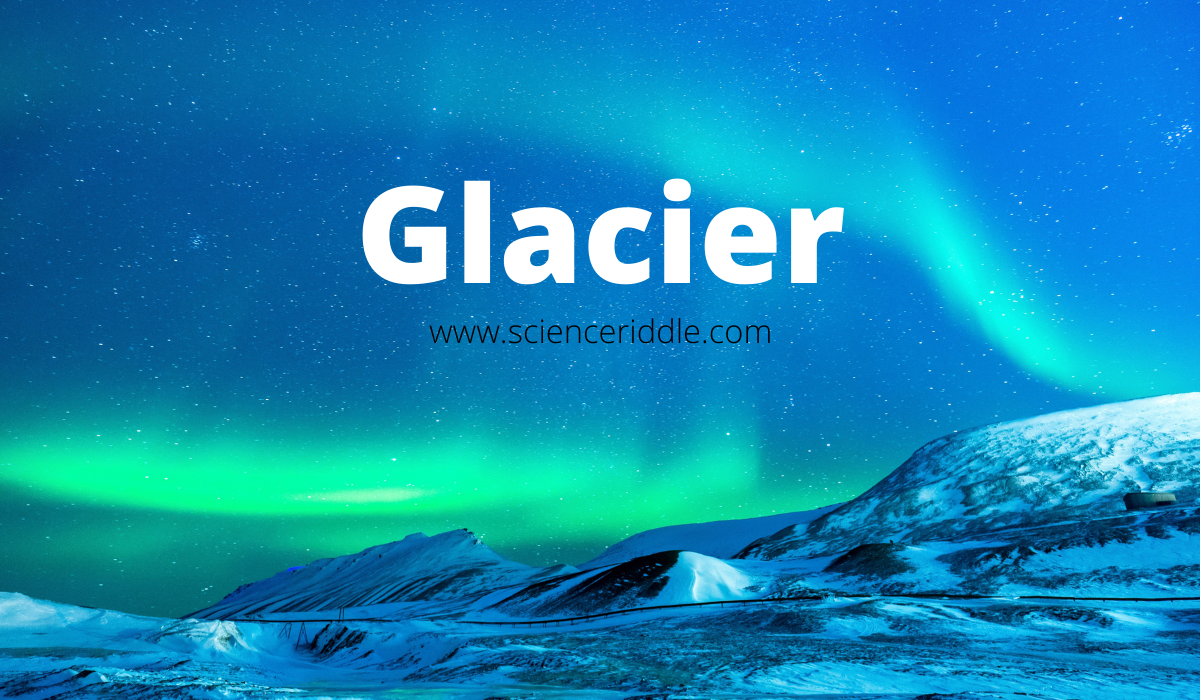White snowy mountains always attract us towards them. The white cover over the mountain peak leaves us astonished with their beauty. On to it if we get a field cover with ice then it makes us feel on top of the world. A huge area covered with ice is called Glaciers.
Let us know more about glaciers
What are Glaciers?
Glaciers are a natural wonder of the world. These are a huge mass of crystalline ice that moves slowly over the land due to their own weight and gravity.
The word glacier comes from the French word glace means ice. They are often called” rivers of ice.” It takes many years to form a glacier.
Some famous glaciers of the world are:
- VATNAJOKULL GLACIER NATIONAL PARK
- ALETSCH GLACIER
- COLUMBIA ICEFIELD
- PERITO MORENO GLACIER
- MYRDALSJOKULL GLACIER
- JOSTEDAL GLACIER
- BALTORO GLACIER
- MENDENHALL GLACIER
- PASTERZE GLACIER
- FRANZ JOSEF GLACIER
How do glaciers form?
Glaciers are formed when snow accumulates from years at one place and converts into solid ice mass. Piling of snow over one another results in the formation of sheets of ice or pallets.
Features that lead to the formation of glaciers are:
- Temperature close to freezing point.
- Winter Precipitation causes the accumulation of snow.
- Temperatures remain the same throughout the year or if changes do not affect the accumulation of snow.
Threats to glaciers
Sometimes due to human factors or due to natural factors glaciers cause great damage for mankind. The melting of snow, evaporation, erosion, calving, excavation, increase in trekking activity, global warming, climate changes, glacial outburst, increase in temperature are some of the reasons.
In the past, there were so many incidents where glaciers cause great damage to mankind.
Recently India has faced A Himalayan glacier that broke and caused sudden, massive flooding in the northern Indian state of Uttarakhand on Sunday 7th February 2021. The floodwaters burst open a dam and a deluge of water poured through a valley in Uttarakhand. It resulted in the smashing of two dam projects. In 2013 also in Uttarakhand Because a heavy rainfall which resulted in landslides also caused great havoc. Now this time the district of Chamoli in Uttarakhand appears to have been hit hardest by the surging Dhauliganga River.
Now a question arises
What is glacier outburst?
It is a type of outburst flood that occurs when the dam containing a glacial lake fails. An event similar to a GLOF (glacial lake outburst flood)where a body of water contained by a glacier melts or overflows the glacier is called a jokulhlaup. Failure can happen due to erosion, a buildup of water pressure, an avalanche of rock or heavy snow, an earthquake, volcanic eruptions under the ice, or massive displacement of water in a glacial lake when a large portion of an adjacent glacier collapses into it. Global warming is also one of the reasons for such kinds of calamities.
Glaciers in India
In India, the Himalayan region has some of the most notable glaciers in the world. Most glaciers lie in the territory of Sikkim, Ladakh, Himachal Pradesh, and Uttarakhand, Arunachal Pradesh.
People love to go for tracking on these glaciers. The white cover of ice always fascinates the trekker towards them.
Arunachal Pradesh
- Bichom Glacier
- Kangto Glacier
- Mazgol Glacier
Himachal Pradesh
- Bara Shigri Glacier
- BCB Glacier
- Beas Kund glacier
Sikkim
- Zemu Glacier
- Rathong Glacier
- Lonak Glacier
Uttarakhand
- Arwa Glacier
- Bagini Glacier
- Bhagirathi Kharak Glacier
Ladakh
- Siachen(2nd longest glacier outside of the polar regions & largest in the Himalayas-Karakoram region)
- Hari parbat Glacier
- Chong Kmdan Glacier
Conclusion
Nature has given us so many things but if we are exploiting nature it will come up in such a disaster so always respect what we got. conserving and protecting our nature or ecosystems our utmost responsibility.



escort bayan
Say, you got a nice article. Really looking forward to read more. Much obliged. Florinda Sullivan Tortosa
turkey e visa
I like a very useful article, I like our page and follow it Christalle Ahmad Ludlew